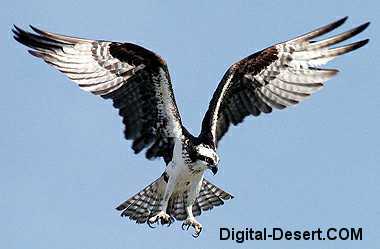Scientific Classification of Raptors
There seems to be constant change in the taxonomy of birds based on new scientific information.
The following classification is based on The Cambridge Encyclopedia of Ornithology and may
not completely match the classification found in a specific field guide. The descriptions are
general down to the Family level.
Class - Aves
Subclass - Neornithes
Order - Falconiformes - (Hawk-like birds)
-
Family - Sagittariidae
Family - Pandionidae
Family - Cathartidae
Family - Falconidae
Family - Accipitridae
-
Family - Tytonidae
Family - Strigidae
1. The scientific class Aves includes all birds.
2. Birds have feathers, wings, beaks, and scales on their legs and feet. They're also warm-blooded, breathe air, and lay eggs.
Subclass - Neornithes
This subclass includes all species of modern birds.
Order - Falconiformes - Hawk-like birds
1. Falconiformes have the characteristic hooked beak with sharp edges; fleshy ceres (soft skin) at the base of the beaks; sharp, curved talons; keen vision; and are carnivorous (animal-eaters).
2. Falconiformes are commonly called birds of prey or raptors. They are called diurnal raptors because they hunt during the day. Owls (Order Strigiformes) are also birds of prey, but are nocturnal (hunt at night).
Family - There are five families in the Order Falconiformes.
Sagittariidae - There is only one species in this family, the secretary bird (Sagittarius serpentarius). Though classified as a Falconiformes, it has many crane-like physical qualities, such as long legs and short, blunt toes. The secretary bird lives in the savannas of sub-Saharan Africa.
Pandionidae - There is also only one species in this family, the osprey (Pandion haliaetus). This fish-eating species can be found near coasts, lakes and rivers worldwide. It has a unique foot structure. The outer front toe can swing to face backward with the hind toe, an adaptation for grasping their prey.
Cathartidae - New World vultures. There are 7 species in the family and they are found in open country and forests from southern Canada to southernmost South America. Like Old World vultures, they're primarily carrion eaters and have more or less unfeathered heads. Unlike Old World vultures, they don't have a syrinx (voice box), don't build nests, and their septum (the structure that separates the two nostrils) is perforated. The Andean (Vultur gryphus) and California condors (Gymnogyps californianus), turkey vulture (Cathartes aura), and black vulture (Coragyps atratus) are in this family.
Falconidae - Falcons and caracaras. The family Falconidae contains 60 species and can be found worldwide except Antarctica. Falconidae are generally agile predators relying more on live prey than carrion. They are similar to birds in the family Accipitridae, but their beaks are notched, and they have proportionately longer wings. The peregrine falcon (Falco peregrinus), prairie falcon (Ffalco mexicanus), and American kestrel (Falco sparverius) are in this family.
Accipitridae - Hawks, eagles, kites, Old World vultures, harriers, and buzzards. The family Accipitridae contains 217 species. The members of this varied group are believed to be derived from a common kite-like ancestor. Most are active predators and build stick nests. Bald eagles (Haliaeetus leucocephalus), red-tailed hawks (Buteo jamaicensis), Cooper's hawks (Accipiter cooperii), and golden eagles (Aquila chrysaetos) are in this family.
Genus and species - The Order Falconiformes has 286 species worldwide. There are 31 species that are generally considered North American birds.
Order - Strigiformes - Owls
1. Strigiformes have the characteristic hooked beak with sharp edges; fleshy ceres (soft skin) at the base of the beaks; sharp, curved talons, with a reversible outer toe; keen vision; and are carnivorous (animal-eaters).
2. Strigiformes have forward facing eyes that are set in the sockets; a facial disc; and extremely flexible necks.
3. Strigiformes are commonly called birds of prey or raptors. They are called nocturnal raptors because they hunt at night. Hawk-like birds (Order Falconiformes) are also birds of prey, but are diurnal (hunt during the day).
Family - There are two families in the Order Strigiformes
Tytonidae - Barn Owls. The family Tytonidae contains 10 species. They can be found in all habitats except extreme northern areas. The common barn owl (Tyto alba) is the most prominent member of this family.
Strigidae - (Typical) Owls. The family Strigidae contains 124 species worldwide. They live in all types of habitats worldwide except Antarctica and some remote islands. Great horned owls (Bubo virginianus), short-eared owls (Asio flammeus), western screech owls (Otus kennicottii), and northern saw-whet owls (Aegolius acadicus) are in this family.
Genus and species - Worldwide 134 species are in the Order Strigiformes. Nineteen of these species are considered North American owls.
< Previous - Contents - Next >

Falconiformes: Cathartidae: Cathartes aura
(Turkey Vulture)

Strigiformes: Strigidae: Otus kennicottii
(Western Screech Owl)

Falconiformes: Accipitridae: Haliaeetus leucocephalus
(Bald Eagle) USFWS photo

Falconiformes: Falconidae: Falco sparverius
(American Kestrel)

Falconiformes: Accipitridae: Buteo jamaicensis
(Red-tailed Hawk)

Falconiformes: Pandionidae: Pandion haliaetus
(Osprey) NASA photo

Strigiformes: Tytonidae: Tyto Alba
(Barn Owl)